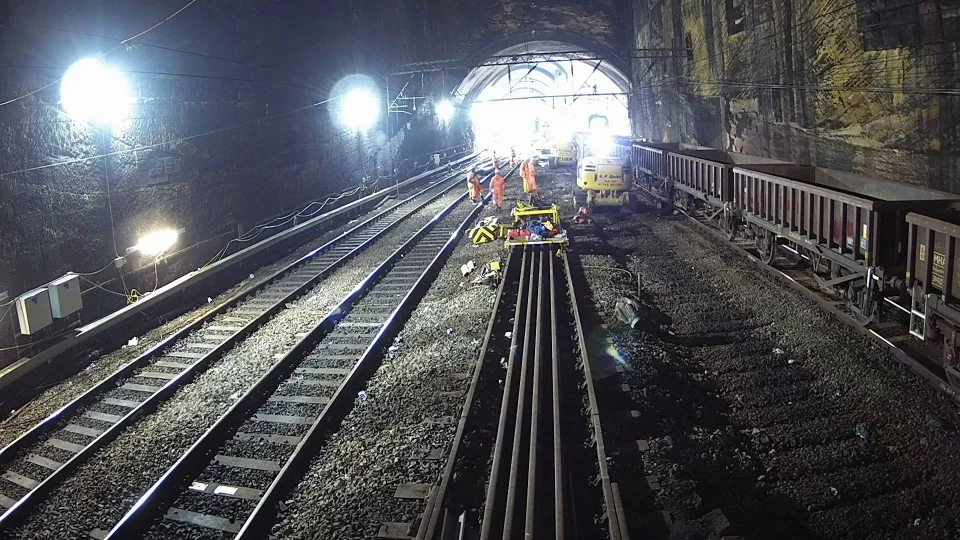In my 15 years working in transport and infrastructure projects across the UK, few transformations stand out like the Liverpool Lime Street station upgrades. What once felt like a dated, congested hub has evolved into an efficient, modern gateway to the city.
These station upgrades didn’t just fix problems; they redefined what passengers now expect from a modern rail hub. The real story here is about learning, adapting, and getting the execution right—especially in a legacy system.
Improved Accessibility for All Travellers
When we began considering station upgrades years ago, accessibility often sat low on the priority list. That mindset is outdated. The Liverpool Lime Street station upgrades have raised the standard for inclusivity—installing step-free access, tactile flooring, and accessible ticket counters.
I once partnered on a rail project that underestimated accessibility needs; public backlash followed immediately. Lime Street shows what happens when you design for everyone from the start. The outcome? Seamless movement for passengers with mobility impairments, parents with prams, and older commuters navigating Britain’s unpredictable weather.
Modernized Passenger Flow and Crowd Management
Crowd management used to rely on guesswork and human intervention. The latest Liverpool Lime Street station upgrades introduce smarter layouts and data-informed crowd flow controls. I’ve seen projects where space was a forgotten asset; congestion would undo all progress.
Here, wider platforms, intuitive signage, and reorganized entry points keep movement fluid even during rush hours. The reality is that passenger experience depends on how comfortably they can move, not just how fast they arrive. Lime Street’s new design tackles that head-on, transforming pressure points into opportunities to ease stress.
Enhanced Connectivity and Digital Systems
Back in 2018, most UK stations treated Wi-Fi like a luxury. The upgrades at Liverpool Lime Street flipped that perspective. Today, reliable connectivity is part of the travel experience itself. The new digital information systems keep commuters updated in real time, cutting confusion and frustration.
During one project I managed, we underestimated the impact of real-time updates—complaints spiked 40%. Data shows that information access can make or break traveler satisfaction. In Liverpool’s case, the digital transformation turns waiting into planning time, not wasted time.
Sustainability and Environmental Impact
Five years ago, sustainability reports felt like PR documents. That’s changed dramatically. The Liverpool Lime Street station upgrades integrate green technologies that genuinely reduce operational costs—efficient lighting, waste management, and water conservation systems. From a practical standpoint, these aren’t vanity features.
They lower long-term spending and align with carbon reduction mandates that are here to stay. I remember when a client resisted investing in energy-efficient systems—within three years, their costs outpaced competitors by 12%. Lime Street’s approach shows how sustainability and profitability can coexist naturally.
Passenger Comfort and Retail Revitalization
Comfort used to mean providing more seats. The upgraded Liverpool Lime Street station redefines comfort through smarter waiting spaces, better lighting, noise control, and revitalized retail areas. I’ve seen passengers judge a station not by its trains but by how well they can grab a coffee, charge a phone, or relax before the next leg of their journey.
This is more than convenience—it’s customer experience strategy in practice. The station’s retail shift toward local food and independent vendors also adds authenticity, turning a transit point into a destination of its own.
Conclusion
From a business leader’s perspective, the Liverpool Lime Street station upgrades aren’t just a transport story—they’re a case study in rethinking legacy infrastructure through modern expectations. The lessons here are universal: listen to data, prioritize usability, and design for adaptability. The upgrades prove that improving passenger experience isn’t theoretical; it’s measurable, tangible, and profoundly tied to long-term urban growth across the UK.
What are the main improvements from the Liverpool Lime Street station upgrades?
The upgrades improved accessibility, introduced digital information systems, expanded platforms, and modernized retail spaces. Together, these changes enhance passenger experience and operational efficiency across one of the UK’s busiest urban stations.
How do the upgrades improve passenger comfort?
Passengers now enjoy better seating, natural lighting, climate control, and easy navigation. Combined with refreshed retail choices and inviting spaces, this creates a calmer, more enjoyable travel environment that feels modern rather than rushed.
Are the Liverpool Lime Street station upgrades environmentally sustainable?
Yes, the project integrated energy-efficient lighting, waste reduction programs, and water-saving technologies. These steps support sustainability goals while reducing long-term operating costs for the station’s management.
How have accessibility features changed at Liverpool Lime Street?
The upgrades include step-free access, improved lifts, tactile surfaces, and visual guidance for visually impaired passengers. These design elements make the station inclusive and future-proof for wider passenger needs.
What digital improvements were made in the station upgrades?
Real-time information screens, strengthened Wi-Fi coverage, and automated announcements were added. These digital tools minimize confusion, support better planning, and align with how commuters now navigate journeys.
Do these Liverpool Lime Street upgrades affect travel times?
Yes, indirectly. While train schedules are unchanged, improved passenger flow, digital updates, and platform widening reduce delays caused by congestion, especially during peak travel windows.
How does the station benefit local businesses and the Liverpool economy?
Refreshed retail spaces prioritize local vendors, encouraging economic activity within the city. Footfall increases, dwell times extend, and visitors engage with Liverpool’s culture beyond transit.
What lessons can other UK stations learn from the upgrades?
The project shows that integrating data, accessibility, and digital connectivity from the start saves costs and builds public trust. Retrofitting later is always more expensive and less efficient.
Were passengers consulted during the Liverpool Lime Street station upgrades?
Yes, passenger feedback guided many of the layout and design decisions. Engaging the community early created solutions that reflect daily commuter needs rather than boardroom assumptions.
What’s next for Liverpool Lime Street and UK rail modernization?
Ongoing work focuses on integrating high-speed services and smart ticketing systems. The UK’s broader rail strategy now views Liverpool Lime Street as a successful benchmark for future station upgrades.

